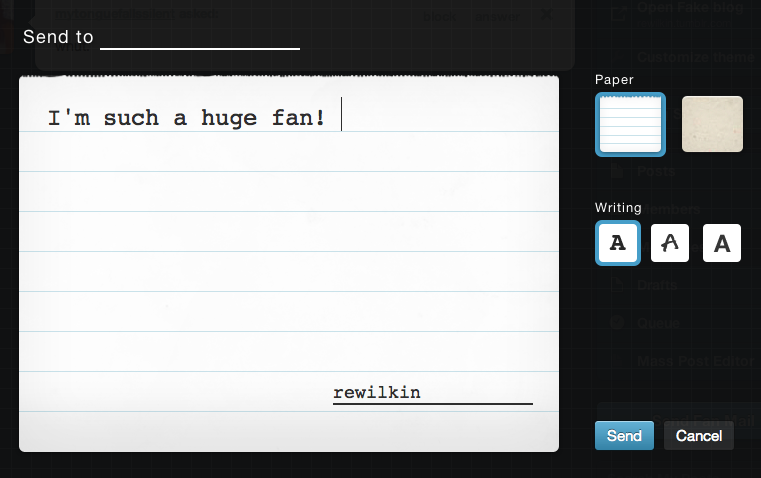The sublime James McNeill Whistler once said, “Nature contains the elements, in colour and form, of all pictures, as the keyboard contains the notes of all music. But the artist is born to pick, and choose, and group with science, these elements, that the result may be beautiful--as the musician gathers his notes, and forms his chords, until he bring forth from chaos glorious harmony.” In the years since, the relationship between art and music has progressed from a silent harmony to a colorful crescendo.
How Windows 8 and Surface Will Change the Way You View Microsoft
Windows 8 is different than other iterations of this product. Rather than refining an old product Microsoft has remade the OS for a broad range of touch screen devices as well as laptop and desktop boxes. This new strategy is a game changer for the industry. And it isn't just Microsoft that is riding on the success of this product; it is hardware manufactures as well.
Viewpoints: A New Photo App Centered on the Style of Artist David Datuna
In 2008, Damien Hirst took a decision that raised many eyebrows and caused others to furrow. He bypassed his gallery (Gagosian), and took his works directly to auction at Sotheby’s. While Hirst’s move was as audacious as a shark in formaldehyde, his motivations were probably (mostly) monetary and sensationalistic. Yet the desire to bypass the selectivity of galleries and create awareness or a market for their art is not unique to artists such as Hirst. But while he resorted to a giant of an auction house, artists today can use something as small as an app.
WikiLoot: A Proposal to Battle Art Smuggling with Crowdsourcing
If they do indeed exist, the Greek and Roman Gods are bound to be upset. Century after century, they have been removed from their temples in Italy and Greece to be preserved, conserved, and admired in heathen lands. Even in Egypt, the rage of the pharaohs could only be an incandescent gold. But what must really infuriate these divinities and demigods is when they are looted, smuggled, and acquired illegally.
Review of Tate Modern's new app
The Tate Modern recently launched a new app: Magic Tate Ball. The app is free in the same vein as RaceVSTime was (an app that Tate Modern released last January). Here is a review after a few days of trying it out on an iPad (first edition).
Some background:
Magic Tate Ball is a new location-based mobile app from Tate, inspired by the iconic Magic 8 Ball, where players shake the ball in search of an answer to one of life’s mysteries.
Time to Artify It
The art market is steadily adopting the online model, from auction houses to art fairs, from virtual exhibitions to limited edition online prints. Yet the success of this model remains circumspect, with questions abound; will online art fairs attract the clientele of Frieze Art Fair or Art Basel? Can aesthetic preferences be decoded by art genomes? Only in a few years will one be able to judge whether the online art world found success among pixels or became itself pixelated. For now, the move towards the digital has made room for interesting innovations in the area of art business, of which Art.sy, Paddle8, VIP Art Fair are some of the most well known.
Touring the Louvre with a Nintendo 3DS

The eagerly awaited Nintendo 3DS audio guides arrived at the Louvre in early April. For security reasons, they are not quite the action packed adventure that some may have been hoping for. Nevertheless, the audio guides are a great way to tour the museum and have some neat capabilities.
A recent review by Mike Schramm of Joystiq provides insight on just how Nintendo 3DS has been utilized at the Louvre. As he notes, the audio guide lets visitors explore the museum in three ways; an interactive map, a Masterpieces Tour, or an option called Visit a Must-See Work.
The interactive map highlights points of interest within the museum, which indicate the presence of audio commentary for a particular work. According to Schramm, “Each point of interest on the 3DS' map has at least one bit of audio commentary on it, and sometimes more than that, with various museum officials or professors talking about the work in more depth.”
The second option is the Masterpieces Tour, which will lead you to artworks that have known to draw gasps, tears, and unquestionably, l'humanité en masse. The Masterpieces Tour always keeps apace with you thanks to the 3DS has geolocation capabilities. Those with a tendency to wander will be happy to hear that the audio commentary only begins once you are within the vicinity of the masterpiece. The tour is also flexible in that you can visit other works during your tour; the 3DS will simply (and silently) wait for you to get back on track.
The final option is the Visit a Must-See Work, which will light up a “flashing route line” to a famous artwork nearby. If you happen to be lost, the option acts as a silent distress call, saving you from museological trouble one masterpiece at a time.
The Louvre’s audio guide also makes use of Nintendo’s display and 3D capabilities.“In addition to the audio commentaries, there are 3D photos of the galleries, high-definition images of the artworks, and 3D reconstructions to help you identify the exhibits and give you extra information.” Schramm mentioned how high resolution images of artworks are available on the 3DS, making it easier to explore details on the touch screen. The display is also used to showcase different artworks being compared to the artwork at hand during an audio commentary.
The only drawbacks noted by Schramm were the short battery life and the 3DS’s inability to keep up with location changes of certain pieces. Even so, the Nintendo 3DS is a Super Mario sized step forward in interactivity and audience engagement at the Louvre. In fact, the Nintendo 3DS echoes back to The O at the Museum of Old and New Art (MONA), with its geolocation and touch screen capabilities.
Devices such as The O and the 3DS do more than just guide users, they help them discover. And this sense of discovery is a lot more compelling when users are leading themselves through one of the world’s most visited museums. Nintendo in the Louvre? C’estformidable!
Eventbrite’s Newest Ticketing Solution: the "At the Door Card Reader"
Eventbrite, an online event management company and ticketing platform, just recently released a new product to make selling tickets on-site easier for the consumer and event manager- an iPad credit card reader. In the past, Eventbrite operated completely online. Event managers would create an event page for, let’s say, a jewelry-making workshop or a local symphony concert. Buyers would purchase their tickets online. However, those who purchased their tickets onsite at the last minute were not able to purchase them through Eventbrite. For this reason, Eventbrite launched the iPad application in December, “At the Door,” available for free from the iTunes App Store .
Can "Highlight," a Location-Based Application, Serve the Arts?
Back from South by Southwest (SxSW), a few of our Technology in the Arts staff members are buzzing about the exciting digital apps, tech tools, and conversations they participated in during their jam-packed, no sleep, wild partying (just kidding…kind of…) trip to Austin, Texas, last month. One of the most talked about technologies from the SxSW interactive conference was and continues to be Highlight, a location-based application available for free for the iPhone at the iPhone App Store.
Let's Talk About Tumblr
Tumblr has not been discussed here in over a year, which I believe to be an egregious error. Since it’s undergone some significant changes since our last post, let’s revisit this microblogging platform (which is one of my personal faves). Our original post covered the basics of Tumblr, so if you haven’t checked it out, maybe that’s a good way to get up to speed.
This article is part one of a three part series about Tumblr for arts organizations. The second part can be found here, and the third part will be posted April 27, 2012.
Tumblr was launched in 2007 and is very popular amoung Millennials. Half of users are under the age of 25, and about 20% are in the 25-34 range. The average user spends over two hours on the site per visit and as of 9:00 EST this very morning Tumblr had 19.7 billion posts from 49 million blogs.
Tumblr has some features that are new or a bit different since our last post, including:
The new posting Dashboard - Image via Tumblr.com
Revamped Messaging System A slew of spam messages last year caused the website to reconsider how users message one another. The main communication issue still remains (inability to have a real discussion), users can only post short replies to posts with questions or if the users have the “reply” option enabled. Messages are limited to a certain number of characters and cannot contain links.
Fan Mail The new messaging system does contain a “Fan Mail” feature, which is exactly what it sounds like. Users can customize the appearance of short messages to their favorite blogs who have this function enabled.
Tumblr Fan Mail - Image via Tumblr.com
Share on Tumblr Like Pinterest, Tumblr has a bookmark button that allows users to grab content from anywhere on the web and share it on their Tumblr.
Mass EditTumblr has a mass post edit feature! Now you can easily select posts, delete them, and alter their tags.
There are still some challenges when it comes to Tumblr:
Bye bye Directory The Directory was an aggregation of Tumblr’s top blogs, organized by category. With its disappearance, Tumblr has become even more of a clique – it's hard to find Tumblr blogs unless you already know where to find them. Tumblr still recommends blogs that would be relevant to your interests on your Dashboard, but since you have to have a Tumblr and follow enough blogs for them to know what you like and make a recommendation… It’s a little bit Catch-22.
Success Metrics There’s still the challenge of measuring the impact of your posts. Tumblr has made it easy for you to install Google Analytics to your blog, but offers no internal solutions. (It is still awesome to have a post blow up and go viral though).
Overall, Tumblr is still an interesting blogging platform, with a lot of opportunities for arts organizations to connect with a young demographic. The first week of April will feature the second part of this series: a Mini-Nar on creating your own Tumblr. We’ll also talk about some best practices, including how to fully utilize a GPOY, interacting with your community, and the importance of GIFs. Get hype! Go enjoy your weekend! Don’t burn yourself with that new iPad!







